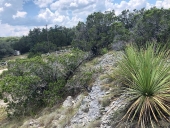posted 14 years ago
Here's some info you may find interesting from one of my old Agronomy textbooks:
the Universal Soil Loss equation
A=RKLSCP
Where A, the predicted soil loss, is the product of:
R=rainfall erosivity
K=soil erodibility
L=slope length
S=slope gradient or steepness
C=cover and management
P=erosion control practices
(they all have corresponding values, which gives you the tons lost/acre)
Without knowing your exact situation, It's difficult to equate exactly how much soil loss can be expected. However, there are certain practices that can limit loss in any situation.
As long as you have the soil covered (cover crop or otherwise), erosion should be controllable. Certain problem areas may become evident, but can be managed with some creativity. The biggest advice I can offer (without seeing pictures) is to not let any erosion problems get away from you.
"an ounce of prevention is worth a pound of cure"
The most important factors (as listed in the equation above) are: soil erosivity (depending on what type of soil you have: alfisols are different from ultisols, from oxisols, etc.), slope length, slope gradient, cover and management, and erosion control practices. As long as you don't have bare soil, rain fall erosivity shouldn't be too bad. However, if you do have bare soil, you MUST work to remedy that situation.
The effect of barriers is to slow water movement, allowing soil particles to settle out and helping to reduce the effect of "gully-ing" caused by rapid water movement.
Terraces are great, but labor intensive. Buffer strips, grassed waterways (depending on how they are constructed), and plenty of filtering plant life may be your best solution; but it's difficult to say without seeing your situation.
Depending on where you are located, the county soil and water conservation district may be of a huge help. They can tailor plans to your exact needs, and often are able to provide you with federal cost-sharing programs (we paid nothing but labor for extensive dry dam work on our farm). It may not seem like that big of a deal, but soil conservation work can be quite expensive.




























































